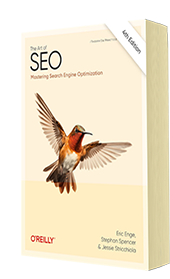Search Engine Optimization: Writing Effectively
In order to achieve maximum search engine visibility, you need to think a bit like a search engine when writing the copy for your website. Search engines look at the HTML code that makes up your web page and attempts to parse out the textual copy on the page, eliminating the HTML markup used for layout. The textual copy goes into the search engine’s “index”, which is a very large database. When a user conducts a search on the search engine, the database is queried to identify all the pages in the index that include those words on the page and/or in the links pointing to that page. So if your page does not include the words the user was searching for, it is unlikely that your page will rank well, if at all. The same holds true when none of the links to that page include the words that the user searched for in the link text (the clickable text that forms the link).
Once pages have been identified, search engines order the results according to relevance. Relevance can be determined based on dozens and dozens of criteria, such as keyword prominence (how often your keywords appear on a page, and where they appear). Crafting Your Page As you begin to start thinking the way a search engine does, most copywriters will realize that they are being too verbose in the first few paragraphs. It also occurs to them as they are writing that the title tag for the page they are working on doesn’t have the most important keywords listed first, but rather last. Moving the most important keywords for that page to the beginning of the title tag, as well as moving those keywords to the top of the page copy, can really help to boost your page ranking.
It is also important that you do not go overboard with what is called “keyword density”. This refers to the number of times your keywords appear on a page. Too many occurrences of your keywords and the page will trip the spam penalty algorithm, which will damage your page’s rank. Also, if you are going after a particular keyword phrase, your web page will appear more relevant if the individuals words in that phrase appear together in your page copy.
In addition to placing your selected keywords at the beginning of your title tag and also in the first paragraph or two of page copy, it also helps to emphasize your keywords by enclosing them in heading tags (i.e. <h1>). Think through how you can best structure the information on your page so that your keywords appear inside heading tags, body copy, and other tags while still writing something interesting and compelling.
Once you have thought about each of these points, it is time to start writing. Try to write at least a couple of hundred words of page copy. This is not a rule, but a good guideline to follow. When you are creating links from text, be mindful to include good keyword-rich text in your link text. Avoid using phrases such as “click here” and “more information” in your links, and instead choose words that are relevant to the page the link will go to.
Test The Waters
At this point, you presumably now have well-written, interesting and useful page copy that includes your most important targeted keywords in all the right places. However, don’t just assume that you have gotten it right, especially if you are new at this. Run your copy past a human being or two to ensure that it is interesting, engaging, and communicates your message effectively. If it doesn’t, it’s time to start again and rethink your copy.
Once you have human approval, it’s time to run the draft page through a search engine spider simulator such as the one at searchengineworld.com/cgi-bin/sim_spider.cgi. This tool, and others like it, will tell you how many times you used each keyword. It will parse the text just like a search engine would, and occasionally you will see that another keyword comes through more strongly than you had intended and a more important keyword is dwarfed in comparison. Don’t worry, now is the time to fix this, and with a little practice you will have a good gut feeling far what will rank well.
The final test, of course, is linking your new page to the rest of your website and seeing how it performs with the real search engines. If the results are lower than expected you can make some adjustments by moving text around, adding and subtracting copy, and so forth. Pay particular attention to your title META tag as this is given the most importance by the search engines out of everything on your page.
Another way to help convince visitors to click through to your website is to write a descriptive summary of your page to be included in your description META tag. Make sure that your description contains the targeted keywords that you have chosen for this page, and be brief. While this does not help with your search engine ranking, having a compelling description is just good form and worth doing.
This article appeared in the December 2005 issue of Practical Ecommerce magazine.

Chapter 6:
Keyword Research
From the fundamentals of link building to the nuances of natural linking patterns, virality, and authority.
Related Posts

Embrace Journaling, Tackle Tardiness, and Explore Our Energetic Echo
Here’s what I found inspirational, challenging, or just downright hilarious this week. What caught your eye? And, remember to check out this week’s great podcast episodes: Scaling a SaaS Company with Jason Morehouse “A crucial factor to business success is to find and take the personal path that works best for you.” — Jason Morehouse […]
Read More
Harrison’s harmony, conquering a blank canvas, & gut health hacks
Here’s what I found inspirational, challenging, or just downright hilarious this week. What caught your eye? And, remember to check out this week’s great podcast episodes: Be a Sales Game Changer with Fred Diamond “True elite sales professionals develop a dedicated mindset, proactive client interaction, and continuous self-preparation. They understand their client’s needs and enable […]
Read More
Rebirth of sleeper trains, 4,000 weeks is a long/short time, and golden age for medicine
Here’s what I found inspirational, challenging, or just downright hilarious this week. What caught your eye? And, remember to check out this week’s great podcast episodes: A Story Worth Retelling with Luke Storey “Aligned values are the cornerstone of successful partnerships, whether in business or life, as they shape our moral code, define our priorities, […]
Read More
